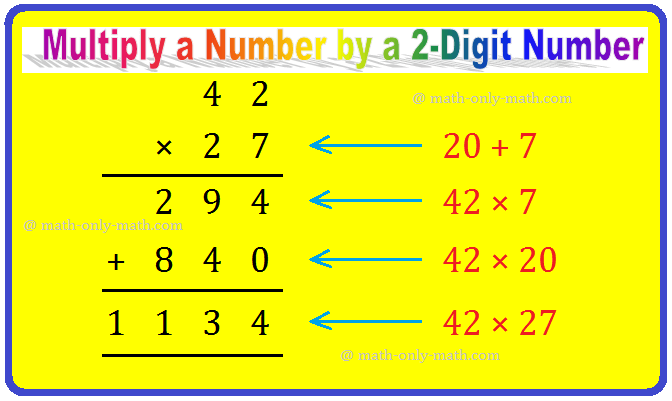sin θ = 1
How to find the general solution of an equation of the form sin θ = 1?
Prove that the general solution of sin θ = 1 is given by θ = (4n + 1)π/2, n ∈ Z.
Solution:
We have,
sin θ = 1
⇒ sin θ = sin π2
θ = mπ + (-1)m ∙ π2, m ∈ Z, [Since, the general solution of sin θ = sin ∝ is given by θ = nπ + (-1)n ∝, n ∈ Z.]
Now, if m is an even integer i.e., m = 2n (where n ∈ Z) then,
θ = 2nπ + π2
⇒ θ = (4n + 1)π2
Again, if m is an odd integer i.e. m = 2n
+ 1 (where n ∈ Z) then,
θ = (2n + 1) ∙ π - π2
⇒ θ = (4n + 1)π2.
Hence, the general solution of sin θ = 1 is θ = (4n + 1)π2, n ∈ Z.
1. Solve the trigonometric equation sin x - 2 = cos 2x, (0 ≤ x ≤ π2)
Solution:
sin x - 2 = cos 2x
⇒ sin x - 2 = 1 - 2 sin 2x
⇒ 2 sin2 x + sin x - 3 = 0
⇒ 2 sin2 x + 3 sin x - 2 sin x - 3 = 0
⇒ sin x (2 sin x + 3) - 1(2 sin x + 3) = 0
⇒ (2 sin x + 3) (sin x - 1) = 0
Therefore, either, 2 sin x + 3 = 0 ⇒ sin x = - 32, Which is impossible since the numerical value of sin x cannot be greater than 1.
or, sin x - 1 = 0
⇒ sin x = 1
We know that the general solution of sin θ = 1 is θ = (4n + 1)π2, n ∈ Z.
Therefore, x = (4n + 1)π2 …………… (1) where, n ∈ Z.
Now, Putting n = 0 in (1) we get, x = π2
Now, Putting n = 1 in (1) we get, x = 5π2
Therefore, the required solution in 0 ≤ x ≤ 2π is: x = π2.
- General solution of the equation sin x = ½
- General solution of the equation cos x = 1/√2
- General solution of the equation tan x = √3
- General Solution of the Equation sin θ = 0
- General Solution of the Equation cos θ = 0
- General Solution of the Equation tan θ = 0
- General Solution of the Equation sin θ = sin ∝
- General Solution of the Equation sin θ = 1
- General Solution of the Equation sin θ = -1
- General Solution of the Equation cos θ = cos ∝
- General Solution of the Equation cos θ = 1
- General Solution of the Equation cos θ = -1
- General Solution of the Equation tan θ = tan ∝
- General Solution of a cos θ + b sin θ = c
- Trigonometric Equation Formula
- Trigonometric Equation using Formula
- General solution of Trigonometric Equation
- Problems on Trigonometric Equation
11 and 12 Grade Math
From sin θ = 1 to HOME PAGE
Didn't find what you were looking for? Or want to know more information about Math Only Math. Use this Google Search to find what you need.
Recent Articles
-
Properties of Multiplication and Division of Fractions Worksheet | Ans
Apr 10, 25 03:17 PM
In properties of multiplication and division of fractions worksheet you will get different types of questions based on properties of multiplication of fractional numbers and properties of division of… -
Word Problems on Fraction | Math Fraction Word Problems |Fraction Math
Apr 09, 25 01:44 AM
In word problems on fraction we will solve different types of problems on multiplication of fractional numbers and division of fractional numbers. -
Multiply a Number by a 2-Digit Number | Multiplying 2-Digit by 2-Digit
Apr 08, 25 01:13 PM
How to multiply a number by a 2-digit number? We shall revise here to multiply 2-digit and 3-digit numbers by a 2-digit number (multiplier) as well as learn another procedure for the multiplication of… -
Multiplication | How to Multiply a One, Two or Three-digit Number?
Apr 08, 25 01:08 PM
In multiplication we know how to multiply a one, two or three-digit number by another 1 or 2-digit number. We also know how to multiply a four-digit number by a 2-digit number. We also know the differ… -
Addition of 4-Digit Numbers | 4-Digit Addition |Adding 4-Digit Numbers
Apr 08, 25 12:43 PM
We will learn about the addition of 4-digit numbers (without carrying and with carrying). We know how to add 2 or 3, 3-digit numbers without carrying or with carrying.



New! Comments
Have your say about what you just read! Leave me a comment in the box below. Ask a Question or Answer a Question.